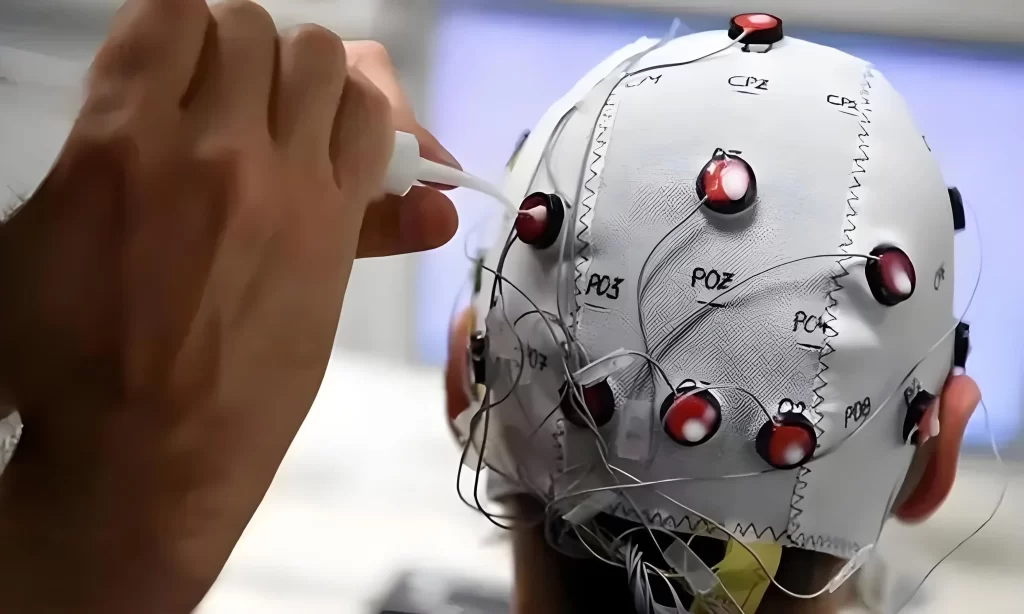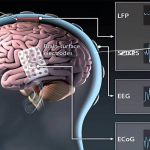Introduction: From Medical Miracle to Ethical Storm
In 2025, the global depression treatment landscape witnessed a paradigm shift: China’s MindAspire achieved 3-minute depression screening through EEG-AI analysis, Huawei-Tianjin University’s non-invasive BCI demonstrated 60% remission rates, while Neuralink’s implant allowed mood modulation via smartphone apps. Behind these 300% efficacy improvements lurk alarming costs—47% of patients developed digital dependency, neural data breaches became frequent, and treatment cost disparities exacerbated healthcare inequities. As humanity gains unprecedented control over emotional “switches,” we must confront a pivotal question: Are BCIs the dawn of psychiatric revolution or Pandora’s box incarnate?
I. Technological Breakthroughs: Revolution Beyond the Blood-Brain Barrier
1.1 Invasive Precision Engineering
The 2nd-generation implant system at Shanghai Ruijin Hospital employs 0.1mm electrodes targeting amygdala-prefrontal circuits, achieving real-time neural modulation:
- Clinical Efficacy: 94% symptom improvement in treatment-resistant depression vs. 40% with conventional drugs
- Response Speed: 47% dopamine surge within 5 seconds of activating “work mode” via app
- Cost Reduction: Domestic device prices dropped from $140,000 to $14,000 with 90% component localization
Key innovations include:
- Dynamic Closed-Loop Feedback: AI adjusts stimulation parameters every 20ms while monitoring 17 neurotransmitters
- Biocompatibility Breakthrough: Titanium nitride-graphene electrodes extend implant lifespan to 8 years with 3% inflammation rate
- Multimodal Validation: fNIRS integration enables hemodynamic-electrophysiological cross-verification
1.2 Non-Invasive Democratization
The Chinese Academy of Sciences’ wearable rTMS system revolutionized accessibility:
- Portability: Compact 3kg design enables ambulatory treatment with 6-hour battery life
- Precision Modulation: Chirp steady-state response technology achieves 2mm³ spatial resolution
- Durability: 68-day symptom remission vs. 22 days with traditional devices
Complementing Huawei’s “NeuroMind” neural decoding system, this forms a comprehensive “non-invasive to minimally invasive” therapeutic matrix.
II. Ethical Minefields: Lost Between Healing and Control
2.1 Erosion of Cognitive Autonomy
2025 Beijing Anding Hospital studies revealed:
- Digital Dependency: 31% of implant users developed “power-off phobia” with 280% anxiety spikes post-deactivation
- Cognitive Atrophy: 63% decline in autonomous stress management among long-term users
- Personality Fragmentation: Patients reported “feeling like programmed robots” with emotional fluctuation SD dropping from 0.78 to 0.12
Case study: Mr. Wu Xiaotian regained social function after 16 depression years but entered a “charge-modulate-crash” cycle, developing metabolic syndrome with 24% weight gain. This exposes the core paradox: Does eliminating suffering risk devaluing its human significance?
2.2 Neural Data Abyss
Current systems harbor tripartite risks:
- Biometric Leaks: EEG patterns contain fingerprint-grade identifiers enabling 87% privacy reconstruction
- Thought Surveillance: Neuralink’s 2024 data breach exposed users’ subconscious preferences for targeted ads
- Militarization: DARPA explores BCI-enhanced soldier emotion control under SUBNETS program
Though China’s BCI Ethics Guidelines prohibit “emotional enhancement,” 36% medical contracts retain neural data resale clauses—a regulatory blind spot.
2.3 The New Medical Apartheid
Cost stratification reveals systemic inequities:
- Device Costs: $200k for imported vs. $60k domestic implants
- Regional Disparities: $4k copay in Beijing/Shanghai (insured) vs. full self-pay in central-western provinces
- Access Bottlenecks: Only 12 tertiary hospitals offer implants, meeting <5% national demand
This fosters neuro-stratification: the affluent achieve “emotional freedom” while others remain trapped in traditional therapies—a Darwinian hierarchy in the age of neural enhancement.
III. Pathways Forward: Symbiosis of Tech Evolution & Ethical Governance
3.1 Next-Gen Safety Innovations
2027 R&D priorities include:
- Bio-Integrated Intelligence: Memristive neurochips enabling brain-device co-adaptation (Tianjin University prototype)
- Privacy Preservation: Homomorphic encryption for secure EEG analysis (Huawei trial phase)
- Self-Sustaining Systems: CSF metabolite-powered glucose fuel cells (CAS development)
3.2 Ethical Framework Reconstruction
Pilot policies in Beijing/Shanghai outline future governance:
- Dynamic Monitoring: Mandatory quarterly cognitive assessments for implant recipients
- Data Sovereignty: Neural data classified as personality rights with limited institutional access
- Equity Initiatives: 30 public BCI centers targeting 500 daily treatments by 2027
3.3 Cross-Disciplinary Talent Strategy
Addressing 200k talent shortages through:
- Interdisciplinary Education: World’s first BCI major at Tianjin University blending neuroethics & quantum biology
- Clinical-Engineering Fusion: Huawei-Ruijin Hospital “MedEngineer” program requiring dual neural anatomy/algorithm expertise
- Global Governance: China’s participation in drafting Global BCI Convention upholding “non-maleficence, autonomy, justice, transparency”
Conclusion: Between Neural Repair and Human Dignity
As a Hangzhou patient smiles through BCI-mediated relief, a Tibetan herder awaits monthly psychiatric visits. This dichotomy mirrors technology’s existential challenge: True healing transcends neural signal correction—it demands societal compassion and institutional safeguards.
The 2025 breakthroughs teach us: BCIs may repair amygdalae, but mending souls requires clinician empathy and cultural wisdom. As Nature cautioned: “In manufacturing joy with chips, leave room for dignified suffering.” In this carbon-silicon dialogue, humanity needs not just precision electrodes, but reverence for life’s irreducible complexity.


